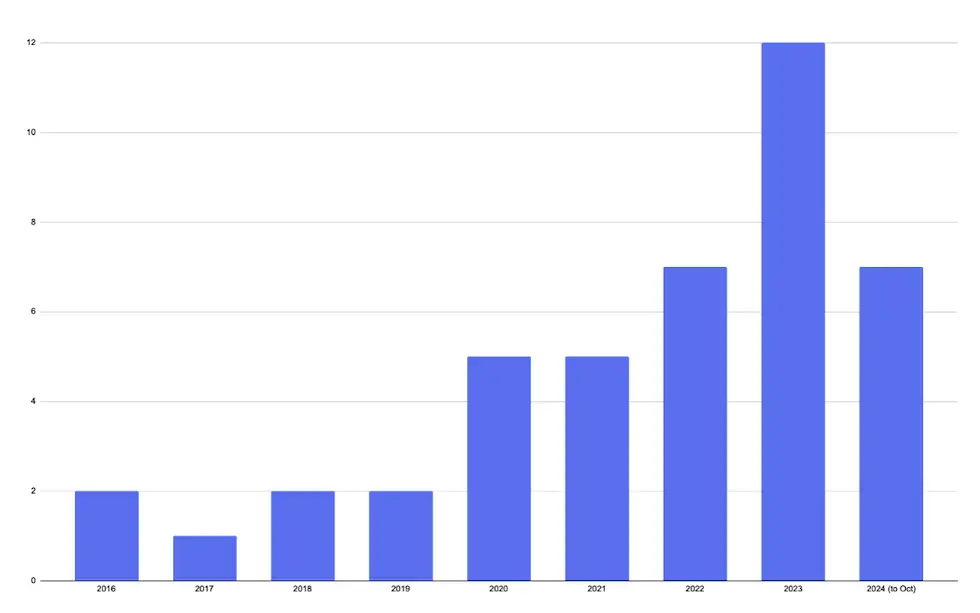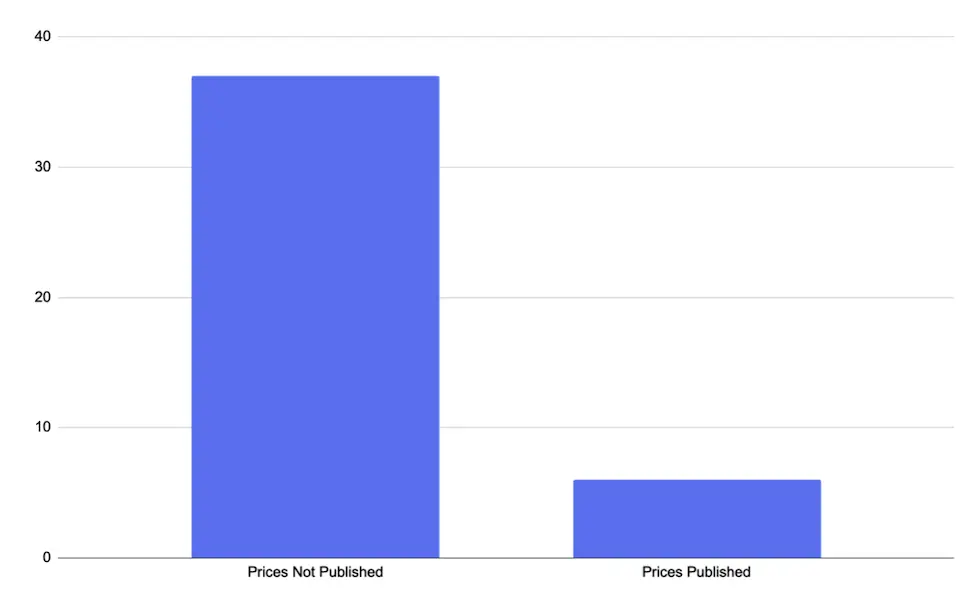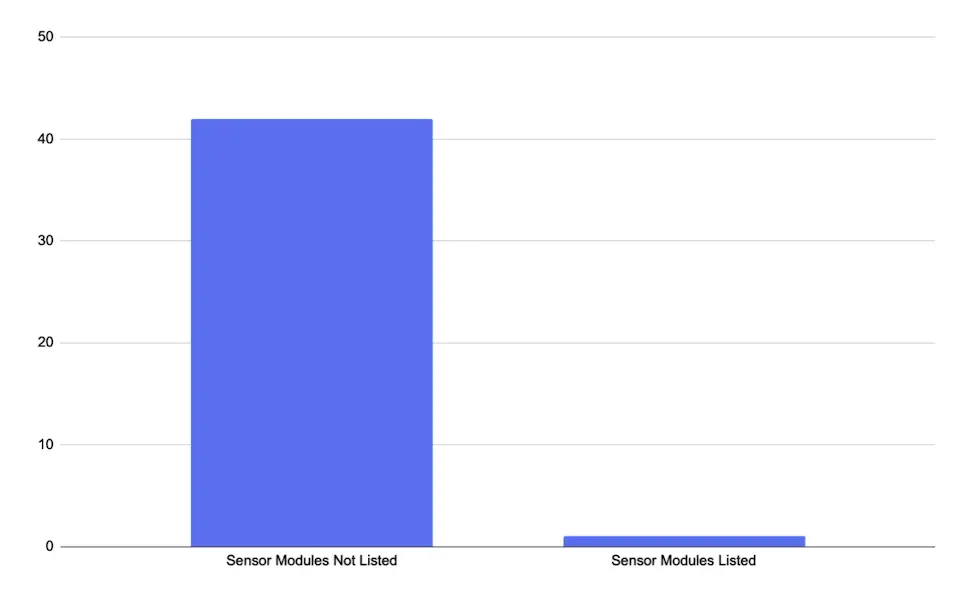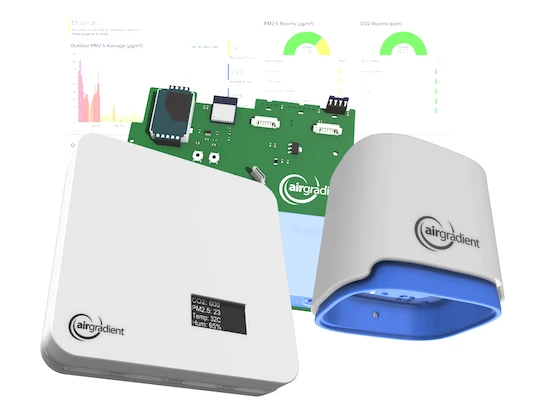AirGradient Open Source Air Quality Monitors
We design professional, accurate and long-lasting air quality monitors that are open-source and open-hardware so that you have full control on how you want to use the monitor.
Learn Moreby Achim Haug on October 20, 2024
Recently, Kaiterra launched a cool new product: the Sensedge Go, a wireless indoor air quality monitor that claims to run up to 8 years on one set of batteries. Since we are also working on reducing the energy consumption of our monitors, we identified that most power is consumed by the PM module.
According to our calculations, it would be extremely difficult to achieve these long runtimes (or only with large trade-offs with accuracy and measurement frequency). So, I reached out to Liam Bates, the CEO, on LinkedIn and asked him what kind of sensor modules he uses. I do enjoy Liam’s posts and thoughts and was expecting we could get into a fruitful discussion.
Unfortunately, it seems Kaiterra believes this to be a secret and I did not get an answer. There are only a handful of sensor module manufacturers like Sensirion, Plantower, Cubic or Senseair and everybody in the industry pretty much uses the same ones. So it’s not clear to me what makes this such a secret.
On another occasion, I asked Liam for a price indication for the monitor and gateway but also did not get a reply. So it seems that the prices are secret as well?
I’m aware that this is a typical B2B business model and the Senseedge Go is geared towards business users. Kaiterra now focuses only on this segment, having discontinued the famous Laser Egg series.
I got curious about how prevalent this opacity is in the industry. All serious manufacturers in the B2B space have their monitors RESET Air certified and so I took a Sunday morning dive and went through all 43 certified monitors to check the following:
Before we come to the results, I want to share some observations I made while reviewing all the products.
What might also be of interest is how popular the RESET AIR accreditations are by year.

Over the last couple of years, the RESET monitor accreditation has become increasingly popular. Please note that the numbers for 2024 are only valid until October 20th.
A few manufacturers have several RESET Air accredited monitor models. Kaiterra and DST each have 4, Airthings and Belimo each have 3, and Omicron has 2.
Now, let’s come to the original questions.

So out of 42 accredited models, only 4 monitors have their prices easily accessible on their websites:
These are:
| Manufacturer / Model | Price in USD |
|---|---|
| AirGradient ONE | 195 |
| Belimo EXT-KA-SQ100 | 1071 |
| Belimo EXT-KA-SE200P | 1786 |
| Belimo EXT-KA-SE100 | 2714 |
| Senva TotalSense IAQ Monitor AQ2W | 1232 |
| NuWave AirSentric WB55 | 670 (Test kit including hub) |
It seems we are by far the most affordable RESET Air quality monitor. Let me know if you believe we should increase our prices ;)
Now, let’s have a look at the 2nd question:

Oops, I think you can probably guess who is the only company publishing the exact sensor modules used in their spec sheets:
| Manufacturer / Model | Price in USD |
|---|---|
| AirGradient ONE | 195 |
It quickly becomes very clear that we at AirGradient are pretty unique among all RESET accredited manufacturers.
We are the only one that is upfront with their prices, their exact specifications and we actually go much further because our monitors are completely open-source hardware. This means all our firmware code, electronic schematics, algorithms, etc. are available on our website.
Did I tell you that we have also been awarded “Most accurate multi-pollutant monitor under EUR 500” by AirLab, an independent French air quality agency?
Did I tell you that we are growing massively and are profitable without any VC money?
Did I tell you that we are growing without any Sales people and any paid advertising?
Finally, did I tell you that we are (most likely) the most affordable RESET air certified monitor?
Now, could this all be connected?
The other day, a prospective customer asked me for a quote for one monitor, and I declined. I asked him to go to our online shop and directly order the product there. The reason I refused to make a custom quote for one monitor is that all our operations are optimized for scale. This is one of the reasons we don’t have salespeople. Now, if most other B2B manufacturers only do custom quotes for each customer enquiry, potentially negotiating with them, how many additional costs does that create? Could that be a reason why all the other monitors are so much more expensive?
Does the traditional B2B model substantially increase the end customer’s prices?
Then, with relatively high prices, is that the reason why the manufacturers don’t want to tell you that the PM module in their USD 1000 expensive device costs less than USD 15 and that exactly the same module is used in other monitors that sell for less than $200? So you get exactly the same accuracy from both monitors.
On the one hand, it’s great that we are the only RESET Air certified monitors that seem to tick differently and are doing very well with it. On the other hand, I wonder if I missed something super important here.
Let me know your thoughts!
Curious about upcoming webinars, company updates, and the latest air quality trends? Sign up for our weekly newsletter and get the inside scoop delivered straight to your inbox.
Join our Newsletter
We design professional, accurate and long-lasting air quality monitors that are open-source and open-hardware so that you have full control on how you want to use the monitor.
Learn More